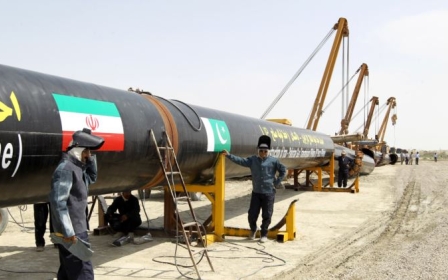Will a nuclear deal expand freedoms of press and speech in Iran?

Since the inception of the Islamic Republic of Iran in 1978, Tehran has perceived “regime change” in Iran as the US establishment's ultimate aim. Iran's strong mistrust of the US has roots in two factors.
Firstly, as the Iranian sociologist Ahmad Ashraf maintains, Iranian culture, in all walks of life, relies on conspiracy theories as a basic mode of understanding politics. Secondly, there are historical facts that reinforce this perception. These include US support of Iraqi dictator Saddam Hussein during his eight-year invasion (1980-1988) of Iran, President Bush’s doctrine of including Iran in the “axis of evil”, the articulation of an “all options on the table” mantra in dealing with Iran’s nuclear crisis, US support for the opposition to destabilise the regime, the imposing of paralysing sanctions and covert operations.
A glaring example of US efforts to destabilise the regime occurred in 2009 when Americans were trying to exploit the massive upheaval in Iran that emerged under the banner of the Green Movement. In the aftermath of street protests, then Secretary of State Hillary Clinton said: “Behind the scenes, we were doing a lot … So we were doing a lot to really empower the protestors.”
Despite this high level of mistrust, in an unprecedented statement in early April, Iran’s Supreme Leader Ayatollah Khamenei suggested that the materialisation of a nuclear deal could lead “to negotiations with [the United States] about other issues”.
One theory maintains that if such negotiations were to occur, the Iranian government could ease restrictions on the press and free speech due to its perception of a diminishing threat from the United States, Tehran's fundamental concern. After all, it is important for the government to repair its legitimacy, which was badly damaged during the violent crackdowns on street protesters in 2009.
This perspective, however, may be flawed for several reasons.
There exists in Iran’s society, as the Iranian sociologist Ramin Jahanbegloo posits, a fragmentation that results in tension between tradition and modernity - a conflict that dates back to the beginning of the 20th century. From 1920 to 1978, modernists were in power. The two Shahs of the Pahlavi dynasty relentlessly pursued a modernisation project in Iran, attempting to “westernise” Iran while oppressing and marginalising the traditionalists and religious conservatives. Mohammad Reza Pahlavi, Iran’s last Shah before the Revolution, would refer to religious conservatives as erteja-e siah (black reactionaries) - a derogatory term.
In resistance to those policies, an Islamic movement under the leadership of Ayatollah Khomeini emerged. The movement led to the 1978 Islamic Revolution that shifted power from the modernists to the traditionalists, who have maintained authority ever since.
Understanding this social and political structure of Iranian society is of paramount importance. Missing this point can lead to significantly false analyses, where for example, movements of dissent in Iran are viewed simply as people against the regime. Dissent should instead be viewed as a struggle between two camps: the religious conservatives (traditionalists) and modernists, which include supporters of liberal Islam and secularists.
Iran’s 2009 contested presidential election is a case in point. According to a report on a now-banned website of the reformist candidate Mir Hossein Mousavi, who was defeated by the hardliner Mahmoud Ahmadinejad, legitimate polling numbers showed Mousavi with 21.3 million votes versus Ahmadinejad's distant 10.5 million. Taking these figures at face value - figures that could for obvious reasons be biased in favour of Mousavi - the conservative power elite that rule Iran, at the time represented by Ahmadinejad, had at least 10 million supporters.
The election was rigged. Nevertheless, it is important to note that while the street demonstrators were representing a large portion of the population, the regime enjoyed considerable support from the conservatives. These two factions - both within and outside the political system, and regardless of the US threat - are engaged in a constant power struggle. A receding US threat will not ease this century-old battle.
It may surprise some that détente with the US could exacerbate freedom of speech conditions even further. It is true that Iranian leadership welcomes less tension with, and less of a threat of regime change from the US, as Khamenei’s aforementioned reconciliatory statement suggests. However, he and like-minded conservatives still have serious concerns about normalising relations with America.
Fear of cultural invasion
“Cultural invasion”, or tahajome farhangi - as Ayatollah Khamenei puts it - is a major factor of concern among conservatives. They resist moral and social liberal values, most importantly the separation of church (religion) and state. Meanwhile, they believe that the US deliberately promotes liberal values among the Iranian young, both to erode their religious beliefs and to ultimately undermine the influence of the Islamic system.
The Iranian ruling elite continually reiterates that numerous Farsi television stations, primarily in the US, are directly or indirectly sponsored by the US government as a major channel of cultural invasion toward Iranian society to promote sexual freedom, consumption of alcohol, immodesty.
The formation of a nuclear deal and the removal of sanctions, even without any US involvement in regime change, would most likely result in the explosion of tourism between the two countries and the expansion of trade and commerce with the West. Conservatives might believe that these exchanges could result in the rise of “westoxificated” urbanites and technocrats as a notable force in Iranian society.
Such an outcome could potentially threaten the nezam (political system). Not only would it weaken people’s religious beliefs and lead to the rise of liberals and technocrats, but it could leave conservative grassroots supporters disappointed, who might then withdraw their support of the establishment.
A deal could increase restrictions
These likely consequences of a possible nuclear deal may lead to conservatives feeling even more threatened by their opponents inside Iran. They may be nervous and react by tightening, rather than loosening, restrictions on freedom of press and expression. The experience of Mohammad Khatami’s presidency can give us a picture of the way conservatives may react when threatened by their opponents (i.e., the supporters of social and political liberties).
The early years of the presidency of the reformist Khatami (1997-2005) gave rise to an unprecedented explosion of newspapers, political liberalisation and expansion of the freedom of the press. In 2000, liberals and supporters of Khatami wrested control of parliament from conservatives for the first time since the revolution. Reformists gained control over the executive and legislative branches of the government. However, the police forces and judiciary remained in conservative control.
The conservatives grew nervous and attacked the reformists. By court order, 19 newspapers were closed and several prominent reformist journalists were arrested over the course of six years. The cleric Abdullah Nouri, Khatami’s confidante and vice president, was found guilty of 15 counts, including activities against the system, and sentenced to five years in prison.
Strongholds of the conservative school of thought are deeply entrenched in Iran. Among them are Supreme Leader Ayatollah Khamenei, the Iran Revolutionary Guards Corps (IRGC), the large paramilitary Basij militia which works under the supervision of the IRGC, the police forces, and the perennially conservative judiciary. Indeed, Ayatollah Sadeq Larijani, the current head of the judiciary, is a potential candidate to succeed Ayatollah Khamenei.
- Shahir ShahidSaless is a political analyst and freelance journalist writing primarily about Iranian domestic and foreign affairs. He is also the co-author of “Iran and the United States: An Insider’s View on the Failed Past and the Road to Peace,” published in May 2014.
The views expressed in this article belong to the author and do not necessarily reflect the editorial policy of Middle East Eye.
Photo: File photo shows Ayatollah Khamenei on 15 September 2014
Stay informed with MEE's newsletters
Sign up to get the latest alerts, insights and analysis, starting with Turkey Unpacked
Middle East Eye delivers independent and unrivalled coverage and analysis of the Middle East, North Africa and beyond. To learn more about republishing this content and the associated fees, please fill out this form. More about MEE can be found here.





